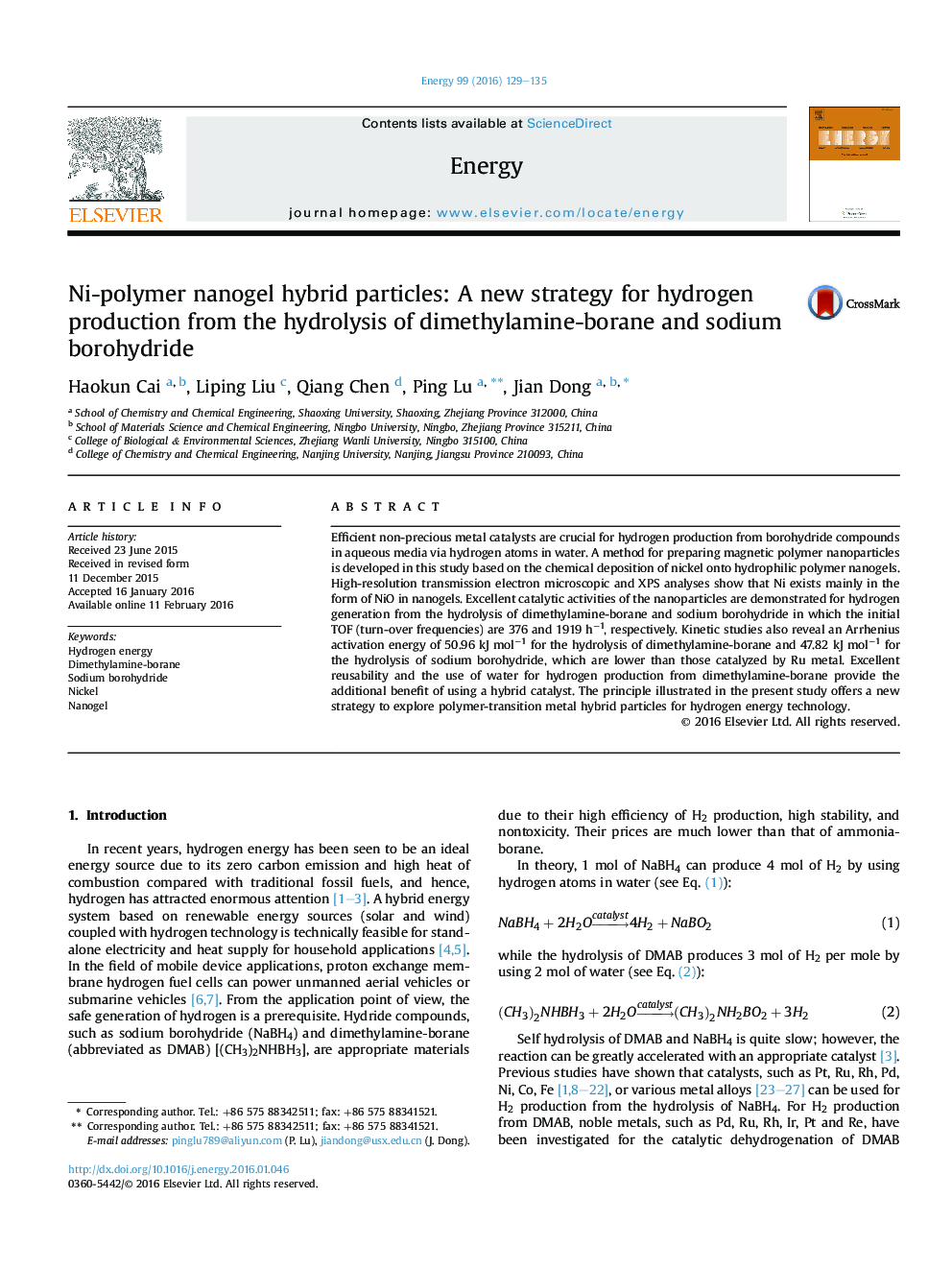| کد مقاله | کد نشریه | سال انتشار | مقاله انگلیسی | نسخه تمام متن |
|---|---|---|---|---|
| 1731322 | 1521449 | 2016 | 7 صفحه PDF | دانلود رایگان |
• Electroless Ni plating on polymer nanogels generated recyclable catalysts.
• The Ni particles proved efficient for H2 production from borohydride compounds.
• The catalysts have lower activation energies than Ru for the hydrolysis.
• Borohydride hydrolysis is more beneficial than dehydrogenation in organic solvent.
Efficient non-precious metal catalysts are crucial for hydrogen production from borohydride compounds in aqueous media via hydrogen atoms in water. A method for preparing magnetic polymer nanoparticles is developed in this study based on the chemical deposition of nickel onto hydrophilic polymer nanogels. High-resolution transmission electron microscopic and XPS analyses show that Ni exists mainly in the form of NiO in nanogels. Excellent catalytic activities of the nanoparticles are demonstrated for hydrogen generation from the hydrolysis of dimethylamine-borane and sodium borohydride in which the initial TOF (turn-over frequencies) are 376 and 1919 h−1, respectively. Kinetic studies also reveal an Arrhenius activation energy of 50.96 kJ mol−1 for the hydrolysis of dimethylamine-borane and 47.82 kJ mol−1 for the hydrolysis of sodium borohydride, which are lower than those catalyzed by Ru metal. Excellent reusability and the use of water for hydrogen production from dimethylamine-borane provide the additional benefit of using a hybrid catalyst. The principle illustrated in the present study offers a new strategy to explore polymer-transition metal hybrid particles for hydrogen energy technology.
Figure optionsDownload as PowerPoint slide
Journal: Energy - Volume 99, 15 March 2016, Pages 129–135
